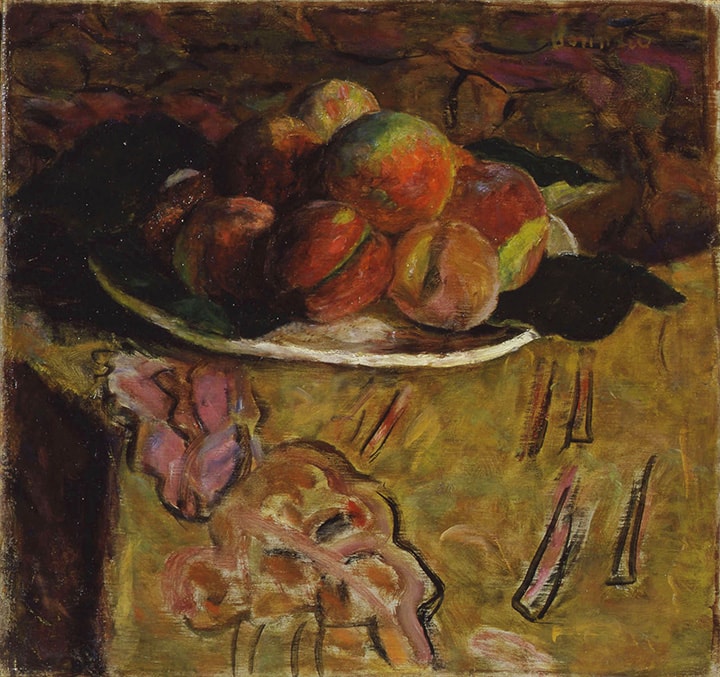There is a formula which fits painting perfectly: many little lies to create a great truth.
Bonnard's Notes in 1945
Pierre Bonnard, a French painter active from the late nineteenth to the mid-twentieth century, used vivid colors to paint everyday scenes both outdoors and indoors. The sense of serenity conveyed by the works introduced here has a rather unexpected resonance with the words quoted above. What on earth were the "little lies" Bonnard was using, and what was the "truth" that Bonnard sought to create?

Landscape Near Vernon depicts a scene a short distance from where Bonnard made his home in Normandy, in the north of France. In the center of the painting we see the Seine. This spot is less than five kilometers from Giverny, where Monet spent his later years. Bonnard remained a close friend of Monet until his death, about three years before Bonnard produced this painting. In it we can see the impact of his direct contact with Monet's work, including seeing the Water Lilies panels in process, in, for example, the flowers depicted in brilliant hues at the bottom of this painting.
It is, however, their compositions that make Bonnard's landscapes unique. When we examine Landscape Near Vernon, what first leaps out at us are the tree branches on the left-hand side of the painting, which remind us of techniques used in Japanese ukiyo-e prints, of which Bonnard, like Monet, was a devotee. Moreover, almost all four sides of the picture are covered with trees and flowers, creating a view that violates common sense. As a result, the horizon, which is slightly higher than the center of the painting, is partially concealed in a deliberate exercise of the artist's ingenuity. What makes that ingenious technique possible are his many "lies" in the placement of his motifs.
Thanks to these “little lies,” our gaze does not focus on a single point but is forced to wander throughout every corner of this vividly colored rectangle. This riverside scene is thus flattened, emerging as a colorful fabric. The pictural reality so gorgeously expressed through the flattening of the picture plane as a whole is the “great truth” that Bonnard always tried to create in his paintings.
Bonnard also says the following.
“It’s not a matter of painting life. It’s a matter of giving life to painting.”
He persisted in doing so based on his own perceptions, even in the twentieth century. His greatness lay in that point. That is also why he painted.
Curator:Hideaki Shimamoto













Oil on canvas